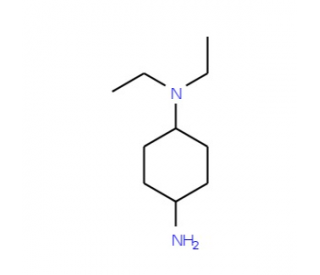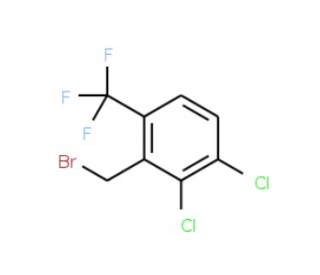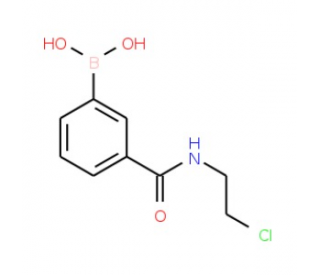詳細(xì)說(shuō)明
Purity
>95%, by SDS-PAGE under reducing conditions and visualized by silver stain
Endotoxin Level
<0.10 EU per 1 μg of the protein by the LAL method.
Activity
Measured by its ability to inhibit the proliferation of mouse T cells induced by CD27 Ligand and anti-CD3. The ED 50 for this effect is 0.4-1.6 μg/mL.
Source
Mouse myeloma cell line, NS0-derived
Rat CD27/TNFRSF7
(Thr21-Arg183)
Accession # NP_001019506IEGRMDP Mouse IgG2A
(Glu98-Lys330)N-terminus C-terminus Accession #
N-terminal Sequence
AnalysisThr21
Structure / Form
Disulfide-linked homodimer
Predicted Molecular Mass
45.1 kDa (monomer)
SDS-PAGE
60-66 kDa, reducing conditions
7888-CD |
| |
Formulation Lyophilized from a 0.2 μm filtered solution in PBS. | ||
Reconstitution Reconstitute at 400 μg/mL in PBS. | ||
Shipping The product is shipped at ambient temperature. Upon receipt, store it immediately at the temperature recommended below. | ||
Stability & Storage: Use a manual defrost freezer and avoid repeated freeze-thaw cycles.
|
Background: CD27/TNFRSF7
CD27, also known as TNFRSF7, is an approximately 55 kDa transmembrane protein in the TNF receptor superfamily. It functions as a co?stimulatory molecule that supports lymphocyte activation and survival (1). Mature rat CD27 consists of a 163 amino acid (aa) extracellular domain (ECD) with three TNFR cysteine?rich repeats, a 21 aa transmembrane segment, and a 47 aa cytoplasmic domain. Within the ECD, rat CD27 shares 66% and 85% aa sequence identity with human and mouse CD27, respectively. CD27 is expressed as a disulfide?linked homodimer that carries N?linked and O?linked glycosylation (2, 3). Proteolytic cleavage of CD27 results in the shedding of a 28?32 kDa fragment of the ECD (3). CD27 is weakly expressed on na?ve T cells and NK cells and is up?regulated upon cell activation (3, 4). It is also up?regulated on activated germinal center B cells, plasma cells, and a subset of memory B cells (5, 6). CD27 binds to the transmembrane glycoprotein CD27 Ligand/CD70 which is expressed on activated B cells, activated T cells, and dendritic cells (1, 7, 8). This interaction contributes to the activation and survival of CD4 + helper T cells (7?10), CD8 + effector T cells (11, 12), memory T cells (9), and NK cells (4, 13). Ligation of CD27 on B cells promotes germinal center formation and the expansion and affinity maturation of memory B cell responses (5, 14).
References:
Nolte, M.A. et al. (2009) Immunol. Rev. 229:216.
van Lier, R.A. et al. (1987) J. Immunol. 139:1589.
Loenen, W.A. et al. (1992) Eur. J. Immunol. 22:447.
Takeda, K. et al. (2000) J. Immunol. 164:1741.
Xiao, Y. et al. (2004) J. Immunol. 172:7432.
Jung, J. et al. (2000) Eur. J. Immunol. 30:2437.
Goodwin, R.G. et al. (1993) Cell 73:447.
Bowman, M.R. et al. (1994) J. Immunol. 152:1756.
Hendriks, J. et al. (2000) Nat. Immunol. 1:433.
van Oosterwijk, M.F. et al. (2007) Int. Immunol. 19:713.
Rowley, T.F. and A. Al Shamkhani (2004) J. Immunol. 172:6039.
Hendriks, J. et al. (2003) J. Exp. Med. 198:1369.
Kelly, J.M. et al. (2002) Nat. Immunol. 3:83.
Raman, V.S. et al. (2003) J. Immunol. 171:5876.
Entrez Gene IDs:
939 (Human); 21940 (Mouse); 500318 (Rat); 102139476 (Cynomolgus Monkey)
Alternate Names:
CD27 antigen; CD27 molecule; CD27; MGC20393; S152CD27L receptor; T cell activation antigen CD27; T cell activation antigen S152; T14; TNFRSF7; TNFRSF7T-cell activation antigen CD27; Tp55; Tumor necrosis factor receptor superfamily member 7; tumor necrosis factor receptor superfamily, member 7










 粵公網(wǎng)安備44196802000105號(hào)
粵公網(wǎng)安備44196802000105號(hào)